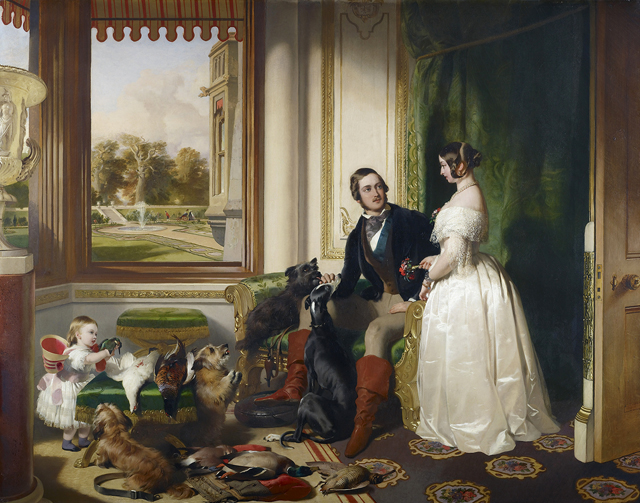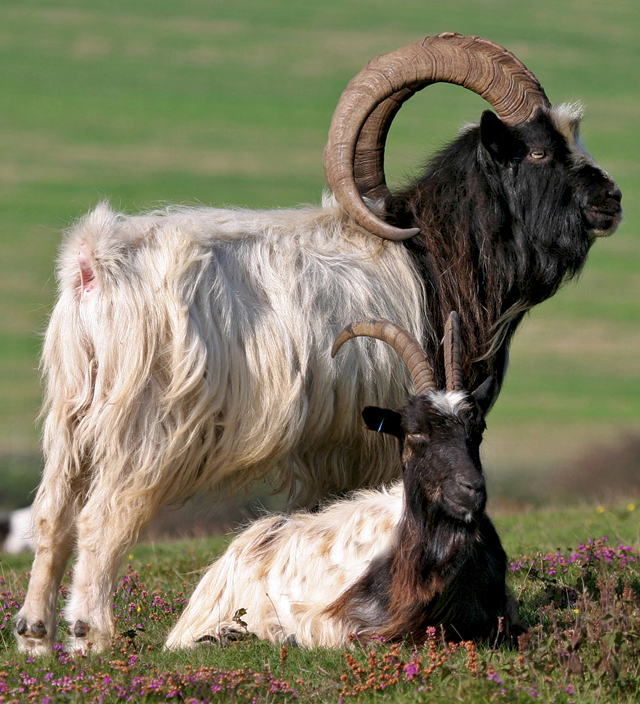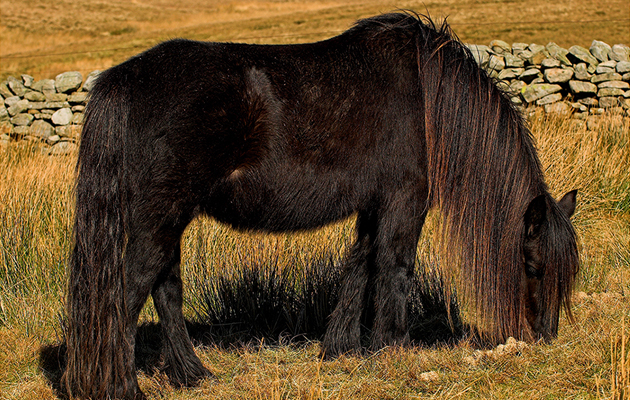Save our bagot goats
Bagot goats are no longer gruff.



The Bagot goat, a magnificent black-and-white beast with a distinguished history, is in danger of becoming extinct — the Rare Breeds Survival Trust (RBST) classifies it as ‘endangered’ (fewer than 200 breeding females) — having been passed over for more commercially viable breeds.
However, the Bagot, which has its own society (www.bagotgoats.co.uk) with, until her death in 2014, Lady Nancy Bagot as its president, is also fortunate to have a dedicated champion who is energetically promoting the goat’s unfussy attitude to eating scrub.
Lucy White, a legal secretary and rare-breeds enthusiast from Norfolk, has set up Browsing Bagots (http://browsingbagots.co.uk), which aims to ensure the goat’s future through its potential for conservation grazing—the clearing of the scrub and coarse grass which, if unchecked, will swamp lush green grass, herbs and wild flowers. Her idea is to place ‘bachelor herds’ of entire males with landowners and conservation bodies so that bloodlines can be continued for use in the RBST’s gene bank; already, she’s organised small herds to clear a Suffolk Wildlife Trust site and a private woodland area in the Brecon Beacons.
The Bagot has never been developed for milk or meat production — it’s mostly been a decorative parkland animal and males are usually castrated to be pets — but it’s hardy and agile and does know how to munch brambles on steep, impenetrable scrubland. ‘We love them,’ says Mrs White, who owns three adult goats and two kids. ‘They’re quite wild, like deer, so when you do build a relationship with them, it’s special.’
Her main challenge is logistics — the cost of transport and the long distances between owners — but she reports: ‘Breeders are starting not to castrate the males now that there is this use for them, so I hope this might improve the breed’s status.’
The distinctive, long-haired, long-horned Bagot may have arrived in Britain in the 14th century, possibly coming from Portugal during the Crusades with John of Gaunt’s returning army. Another theory is that Richard II gave a herd to Sir John Bagot as reward for providing good sport in the hunting field; the breed was first recorded at his Staffordshire estate, in 1389, and the goats feature in the family’s coat of arms.
Conservation grazing is becoming a useful weapon in the fight to save rare-breed domestic animals. Exmoor ponies, which don’t mind eating gorse and rough grass, can be found further afield, grazing the Sussex High Weald and Yorkshire’s Howardian Hills, and the National Trust’s Welsh black and belted Galloway cattle are being used to improve limestone grassland in the Cotswolds.
Sign up for the Country Life Newsletter
Exquisite houses, the beauty of Nature, and how to get the most from your life, straight to your inbox.

Can 'The Prince of Dales' save his ponies?
Can the patronage of the Prince of Wales help save Dales ponies from dying out?
Country Life is unlike any other magazine: the only glossy weekly on the newsstand and the only magazine that has been guest-edited by HRH The King not once, but twice. It is a celebration of modern rural life and all its diverse joys and pleasures — that was first published in Queen Victoria's Diamond Jubilee year. Our eclectic mixture of witty and informative content — from the most up-to-date property news and commentary and a coveted glimpse inside some of the UK's best houses and gardens, to gardening, the arts and interior design, written by experts in their field — still cannot be found in print or online, anywhere else.
-
 'There is nothing like it on this side of Arcadia': Hampshire's Grange Festival is making radical changes ahead of the 2025 country-house opera season
'There is nothing like it on this side of Arcadia': Hampshire's Grange Festival is making radical changes ahead of the 2025 country-house opera seasonBy Annunciata Elwes
-
 Welcome to the modern party barn, where disco balls are 'non-negotiable'
Welcome to the modern party barn, where disco balls are 'non-negotiable'A party barn is the ultimate good-time utopia, devoid of the toil of a home gym or the practicalities of a home office. Modern efforts are a world away from the draughty, hay-bales-and-a-hi-fi set-up of yesteryear.
By Annabel Dixon